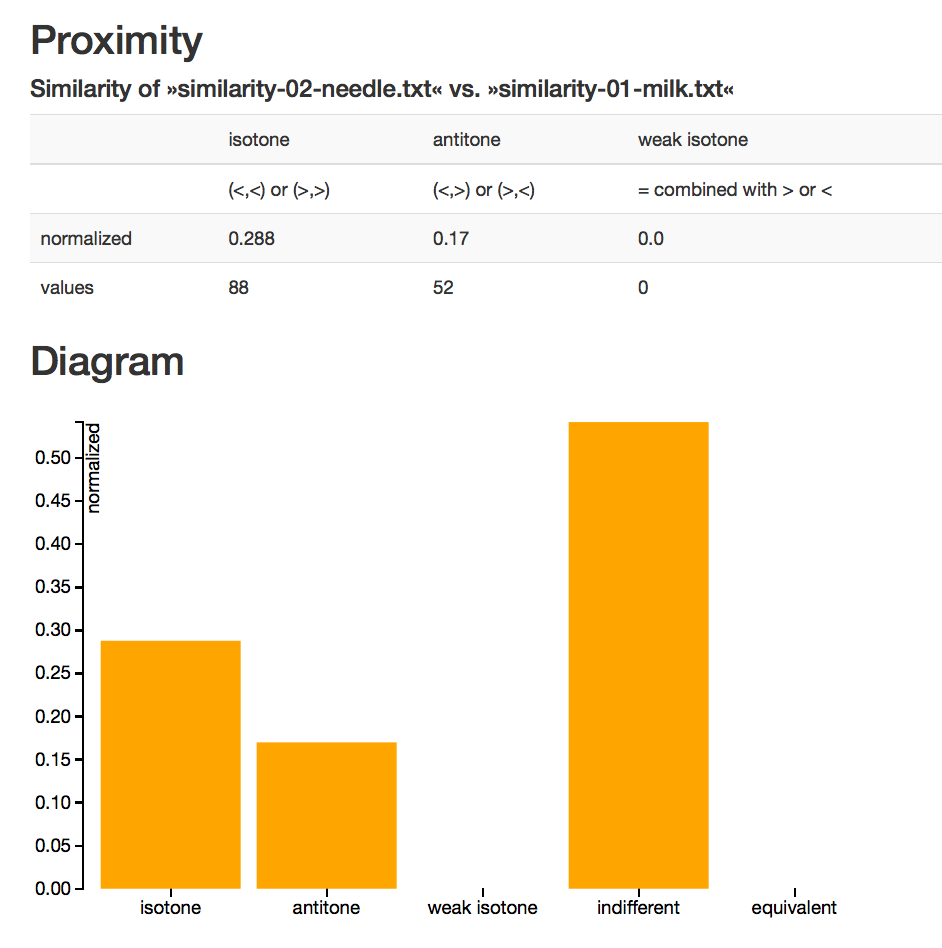Interview with Lars Carlsen
Where is PyHasse a good tool for? Lars Carlsen is answering questions about his work today and in the past.
Rainer Brüggemann: What actually are you doing scientifically?
Lars Carlsen An overall theme of my activities is sustainability. This involves various studies related to environmental and human health impact of xenobiotics and their transformation products. It further includes studies in the social science area.
A further major area of interest is the development and application of model tools, such as structure-activity relationships and ranking techniques as decision support tools, especially the development and application of multi-criteria data analysis tools.
Rainer Brüggemann: Is partial order still relevant for you?
Lars Carlsen In the activities I just mentioned partial ordering is a central element. The very idea that we here have a toolbox that allows to take into account several parameters/indicators simultaneous in a »mathematical« way is important. In our daily life we are constantly faced with situations where we have to choose between different options where several factors may play a role. Just imagine your daily shopping. Buying apples is a simple example. In the supermarket you have several options, but what should you buy? The apples have different color, different size, different taste, different price etc etc. You are facing a simple multi-criteria problem.
The same goes for the evaluation of hazardous chemicals – are they persistent in the environment? Do they bioaccumulate? Are they toxic? Are they carcinogenic? Are they mutagenic? I could continue. Obviously it is not possible just to add the different parameters as one high value for one parameter could compensate a low value for another, which obviously sometimes may lead to nonsense results like placing one hand in boiling water and the other in ice water so on an average it is ok. Basically simple adding up, and possibly averaging parameters is like comparing apples and oranges and order them according to the resulting bananas. Partial ordering on the other hand gives you the possibility to take everything into account on an equal basis. Actually – returning to the super market example – I dare the statement that you are doing that, unconsciously, every time you are shopping.
Rainer Brüggemann: You worked successfully about applications of partial order on the field of chemistry, especially on environmental chemistry. Why is ranking so important?
Lars Carlsen The simple answer is that a ranking allows you to select the most optimal option, or – again staying in the supermarket – to get best value for money. An example could be remediation of polluted soils. You have an area polluted with certain chemicals that must be remedied or even cleaned. You have several options to do so, but the different options work more or less effectively on the various chemical found and obviously at different costs. Here partial ordering appears as an advantageous method to disclose the remediation option that from an overall point of view appears most optimal.
Another example could be, that you have to look at a series of chemicals based for example on parameters like persistence in the environment, their ability to bioaccumulate and their toxicity in order to elucidate which of these chemicals should be the primary focus in an environmental risk assessment? We applied partial order for example in relation to studies on residual rocket fuel and its transformation products as part of a larger study on environmental effect of the space activities at the Baikonur Cosmodrome.
Rainer Brüggemann: What consequences if chemicals are ranked and evaluated as hazarduous. Is there a connection to the Danish EPA (Environmental Protection Agency)? Are they interested in your results. If »no«, what do you think is the reason?
Lars Carlsen Several years ago – in the early days of partial ordering here in Denmark – we actually used quite some energy to convince the Danish EPA of the benefits of partial ordering. However, they were politely listening, but the interest was limited. Most probably because that it would require a lot of work to change the systems already running and generally accepted within the EU system, for example the evaluation system for chemicals. So we were unfortunately not successful.
It should, however, also be mentioned that I did have a little more success with the US EPA which resulted in a couple of joint papers and a small task on commercial basis.
Rainer Brüggemann: Imagine you get 1000000 US Dollars for research. What would you like to do?
Lars Carlsen 1.000.000 USD is a lot of money! I have a lot of ideas in relation to partial ordering. First of all the further development of the methodology appears highly appropriate. Especially the work from the last years on data analyses with special focus on the influence of data uncertainty and noise appears close to mandatory – simply because virtually nowhere in science you can generate data that are not to some extent associated with noise or uncertainty.
I would also like to spend quite some money in developing appropriate material that in simple term can explain and thus promote the use of partial ordering in data analyses and decision tasks. It sounds easy, but I am not so sure about that.
Partial ordering can a priori be applied in a variety of areas. Of more concrete projects where I would like to join in with partial ordering comprise areas both within environmental studies, like climate change and water scarcity, and social studies, like analyzing the problems associated with the high number of refugees and migrants we see these days. Again this may look like relatively simple tasks – and to some extent: yes they are. However, the real big job, like in many other areas of research, is to retrieve and select the data, meaning building the multi-indicator systems, suitable to explain what we are looking for. Further quite some money needs to be allocated to actually promote and eventually – hopefully – get the results accepted as basis for necessary decisions in there areas.
Further I would allocate money for continuing analytical chemical studies for further studies on environmental and health issues associated with xenobiotics.
Think that was for sure the first million – will I get another one if successful?
Rainer Brüggemann: I’m often asked what recommendable literature is if somebody likes to get first experiences with partial order. Do you have some ideas for recommendations?
I still think that the paper we published in our book »Partial Order in Environmental Sciences and Chemistry« (pp 61- 110) from 2006 together with the more recent book by Bruggemann and Patil (2011) constitute a pretty good introduction to partial order methodology. Since then several papers in the area have appeared. However, most of them focus on various special »corners« of partial ordering and not on general introduction. Nevertheless, for the more devoted person they are all pretty valuable contributions to the field.
Rainer Brüggemann: You are lecturer at different universities, for example also in Kazachstan. Do you speak about the concept of partial order? What is the reaction of your students?
Yes, I have made some attempts to introduce partial ordering. However, it is – despite the basic simplicity of the method – not as easy as it could sound. So what I generally do for now is simply shortly to introduce the concept without a lot of examples or exercises (simply due to lack of time). However, in one course focusing on such model tools we worked with real examples, which resulted in a nice paper with a couple of students.
For now I am seriously considering how in the best way the concept can be introduced. Maybe it is not that difficult if you turn it upside down. I will get back to that later. I may get a chance to see if it works during my forthcoming lecturing later this year. Let's see if I can find some suitable »victims«
We thank for the interview!
(Peter Koppatz and Rainer Bruggemann)

